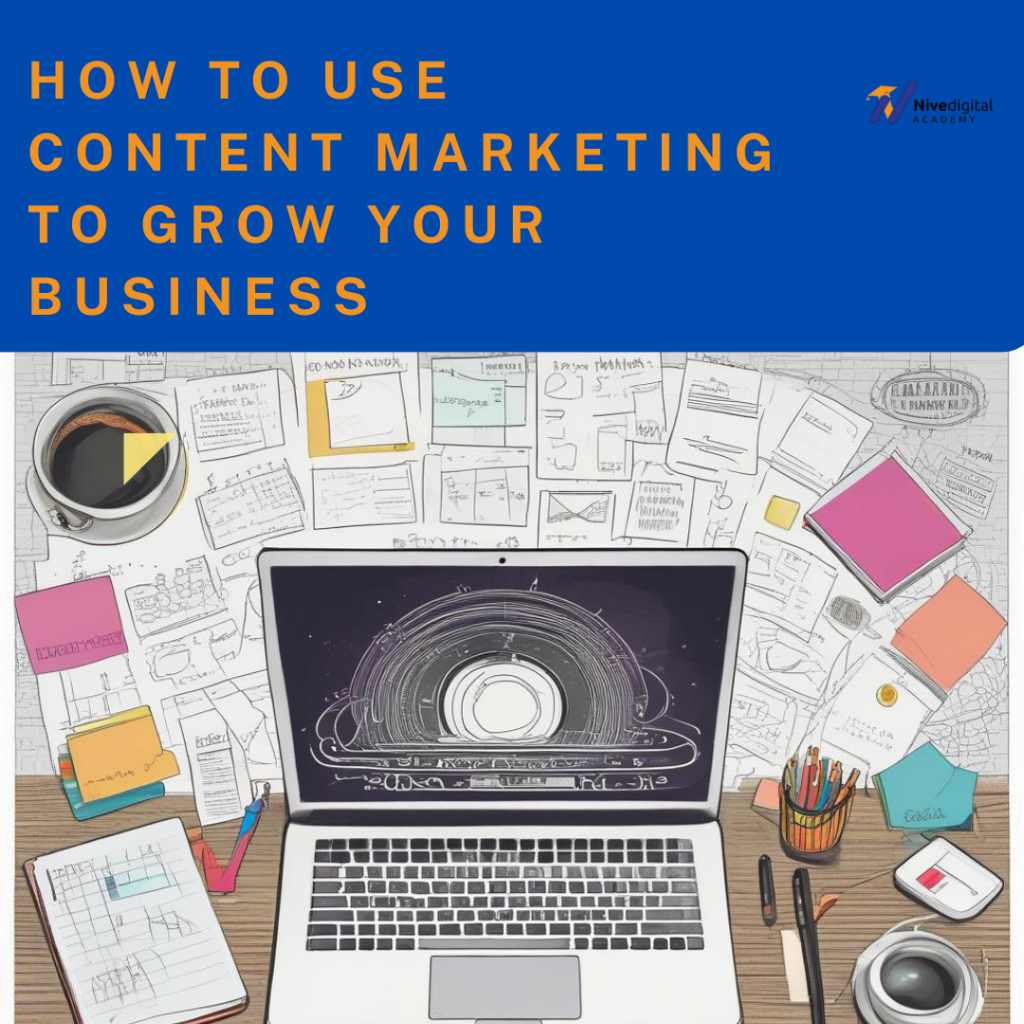
Content marketing is a powerful tool for businesses to engage with customers and grow. It involves creating and sharing valuable content that attracts, informs, and retains customers. By using content effectively, businesses can build relationships, increase visibility, and generate leads. This guide shows how content marketing can help your business grow.
What is Content Marketing?
Content marketing is the practice of creating and sharing online material that informs, entertains, or educates your target audience. The goal is not to sell directly but to provide value, which helps in building trust with potential customers. Content can be in various forms, including blogs, videos, social media posts, and newsletters.
Why Content Marketing is Important
- Builds Trust: Providing useful information builds trust with your audience. When people trust your brand, they are more likely to become customers.
- Increases Visibility: Consistently posting valuable content increases your online presence, making it easier for people to find you.
- Generates Leads: Good content attracts potential customers. Over time, they may be more willing to purchase from your business.
- Improves SEO: Quality content helps your website rank better in search engines, making it easier for potential customers to find your business online.
- Cost-Effective: Compared to traditional marketing methods, content marketing is relatively inexpensive but offers high returns.
Steps to Use Content Marketing to Grow Your Business
1. Know Your Audience
Before creating content, understand who your target audience is. Learn about their needs, challenges, and interests. This helps in crafting content that appeals to them. Use surveys, social media, or customer feedback to gather insights.
2. Set Clear Goals
Decide what you want to achieve with your content marketing efforts. Do you want to increase brand awareness, drive traffic, generate leads, or improve sales? Clear goals help guide your content strategy.
3. Create Valuable Content
Content should be relevant, useful, and informative. Address the needs of your target audience, answer their questions, and provide solutions to their problems. Use a mix of content types like articles, blogs, videos, infographics, and podcasts.
4. Develop a Content Strategy
Plan your content distribution and publishing schedule. Decide how often you will post content and which channels you will use to share it. Consider using social media platforms, email marketing, and your website to reach a broader audience.
5. Optimize for Search Engines (SEO)
Ensure your content is optimized for search engines. Use relevant keywords, create quality headlines, and include meta descriptions. This helps your content appear higher in search results, making it easier for people to find your business.
6. Engage With Your Audience
Respond to comments, messages, and feedback from your audience. Engaging with your audience builds relationships and shows that you care about their opinions. This interaction also improves your brand’s reputation and encourages more people to follow your business.
7. Measure Results
Use analytics tools to track how well your content performs. Monitor website traffic, social media engagement, and lead generation. These insights help you understand what works and what needs improvement.
Types of Content You Can Create
- Blog Posts: Blog posts are an effective way to provide detailed information. They can help with SEO and establish your business as an authority in your industry.
- Videos: Videos engage people visually and are easy to share. They are ideal for demonstrating products, explaining services, or sharing customer testimonials.
- Social Media Posts: Social media is a great platform to share short, engaging content. Use it to interact with your audience and promote blog posts, videos, and other content.
- Infographics: Infographics present information in a visual format. They are easy to digest and share, making them effective for reaching a wide audience.
- Podcasts: Podcasts are a growing content form. They allow you to share valuable insights and engage with your audience in a more personal way.
- Case Studies: Case studies provide real-world examples of how your products or services have solved problems for customers. They help build trust and credibility.
How to Promote Your Content
- Use Social Media: Share your content on various social media platforms like Facebook, Instagram, Twitter, and LinkedIn. These platforms have a large audience that can help spread the word about your content.
- Email Marketing: Send your content directly to subscribers through email. This helps keep your audience informed and engaged with your brand.
- Collaborations: Work with influencers or other brands to promote your content. Partnerships can help expand your reach to a wider audience.
- Paid Ads: Use paid advertising on platforms like Google Ads or Facebook Ads to promote your content. This ensures that your content reaches the right audience quickly.
- Repurpose Content: Turn your blog posts into videos, podcasts, or infographics to reach different types of audiences. Repurposing content helps you make the most out of your content creation efforts.
Common Mistakes to Avoid in Content Marketing
- Not Knowing Your Audience: Without understanding your audience, your content may not be relevant or effective. Always focus on creating content that meets their needs.
- Inconsistent Posting: Posting content regularly is important for maintaining audience interest. Inconsistent posting can cause your audience to lose interest.
- Ignoring SEO: Without SEO, your content may not reach a wide audience. Always ensure that your content is optimized for search engines.
- Focusing Only on Sales: Content marketing should not only focus on selling. Providing valuable information builds trust and loyalty, which can lead to sales in the long run.
- Lack of Clear Goals: Without clear goals, it’s difficult to measure the success of your content marketing efforts. Always set goals and track your progress.
How Content Marketing Helps Different Types of Businesses
1. Small Businesses
For small businesses, content marketing helps level the playing field with larger competitors. It provides a cost-effective way to reach a broader audience, build brand awareness, and generate leads. By creating high-quality content, small businesses can stand out in their industry and attract customers without spending a lot of money on traditional advertising.
2. E-commerce Businesses
E-commerce businesses can use content marketing to drive traffic to their websites and increase sales. By creating product-related content, such as how-to guides, customer reviews, and product demos, e-commerce businesses can help customers make informed buying decisions.
3. Service-Based Businesses
Service-based businesses, like consultants or agencies, can use content marketing to showcase their expertise. Writing blog posts, case studies, or producing webinars allows service providers to build trust with potential clients and demonstrate how their services solve specific problems.
4. B2B Businesses
For B2B businesses, content marketing helps position the company as an industry leader. By creating educational content, such as white papers, eBooks, or research reports, B2B companies can attract and nurture leads, ultimately driving sales.
Conclusion
Content marketing is an essential strategy for growing your business. By creating valuable content that informs, engages, and nurtures your audience, you can build trust, increase visibility, and generate leads. Whether you are a small business or a large company, content marketing can help you achieve your goals without large investments. Start creating relevant content, engage with your audience, and watch your business grow.
FAQs
What is the first step in content marketing?
The first step is understanding your target audience. Learn their needs, challenges, and interests to create content that resonates with them.
How often should I post content?
The frequency of posting depends on your business and resources. Start with a manageable schedule, whether it’s once a week or once a month, and increase frequency as needed.
Do I need to be on every social media platform?
No. Focus on platforms where your target audience is most active. It’s better to master a few platforms than spread yourself too thin across many.
How can I measure the success of my content?
Use analytics tools to track website traffic, social media engagement, and lead generation. These metrics will help you understand how well your content is performing.

Article by:
Oyejobi Adeola, founder of NiveDigital & NiveDigital Academy, is a top expert in SEO and digital marketing.
With over a decade of experience, he has helped businesses grow through advanced SEO strategies and trained hundreds of students to succeed online.
His insights have been featured in top industry publications.

